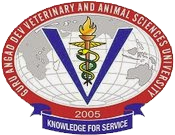

Hyperthermia, one of the common diseases of dairy animals in Punjab during summer season, is manifested by high body temperature. The disease is more prevalent in exotic and crossbred cows but has also been observed in indigenous cows and buffaloes. Dr. S.S. Randhawa, Director of Research, Guru Angad Dev Veterinary and animal Sciences University, Ludhiana revealed that this condition results due to high environmental temperature and humidity. Under such conditions, heat load increases and thermal steady state of the body cannot be maintained which leads to rise in body temperature and onset of hyperthermia. Panting (marked increase in respiration rate), marked decrease in appetite and major loss of milk production are the common manifestations. Temperature is generally more during noon and in the evening and near normal during night and in the morning hours. Hyperthermia is mostly observed during months of July to September. However, sporadic cases have also been recorded during months of May and June.
He said that during this year, in most of the districts of the Punjab, due to drought like conditions with minimal rainfall and high environmental temperature, large number of cases with clinical signs of hyperthermia in dairy animals has been reported by field Veterinarians and dairy farmers.
This condition also occurs as an after effect of foot and mouth disease in dairy animals. Hyperthermia of hot and humid season should be differentiated from panting and fever of haemorrhagic septicaemia in dairy animals and from fever as a result of blood protozoan diseases, viz. thelieriosis, babesiosis and anaplasmosis transmitted by ticks in crossbred cows.This condition in non-responsive to conventional antipyretic, antiprotozoan and antibiotics treatment regimen.
Dr. Randhawa indicated the studies conducted by scientists of Deptt. of Veterinary medicine on the hyperthermic dairy animals which revealed that subcutaneous administration of 5 ml iodized oil (containing 750 mg of elemental iodine) for three consecutive days was highly effective treatment of hyperthermia. More than 90 per cent of the hyperthermic dairy animals recovered with this therapeutic regimen and no relapse was recorded during the post treatment period of 2 months. The response of the treatment was ascribed to negative feedback effect of thyroid hormones on the pituitary gland and in turn on hypothalamus, the heat regulating centre in the brain. He also advised that the affected animals be given bath about 3-4 times a day & free access to drinking water. A veterinary doctor should be consulted for proper diagnosis and treatment.
Dairy farmers are advised to get the blood samples of the crossbred cows tested from the university Veterinary hospital at the peak of body temperature to rule out blood protozoan diseases. Quackery may be harmful for your precious animals besides causing tremendous economic losses to the dairy farmers.
